The Science of Owls
The Science of Owls Explore the world of owls with Dr Prachi Mehta
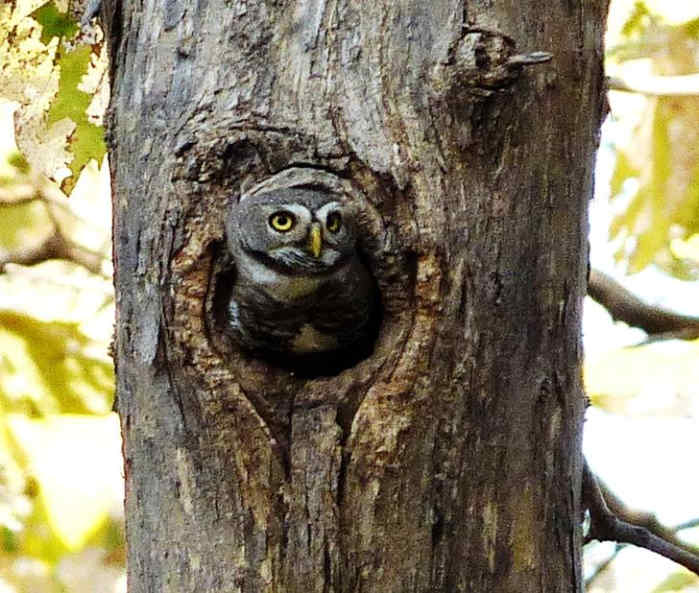
In 2014 Raptor Research and Conservation Foundation (RRCF) initiated a log-term study on the endangered Forest Owlet by awarding a research grant to the Wildlife Research and Conservation Society (WRCS), a non-profit NGO based in Pune, Maharashtra. Dr Prachi Mehta, Wildlife Scientist and Mr Jayant Kulkarni, former IFS officer from Maharashtra cadre and a Senior Conservationist with WRCS proposed to study ecological aspects of the Forest Owlet in Khandwa district of Madhya Pradesh.
Prachi tells us "The Forest Owlet never ceases to surprise…." Here is a juvenile Forest Owlet looking back at us with the same curiosity as we look at it…
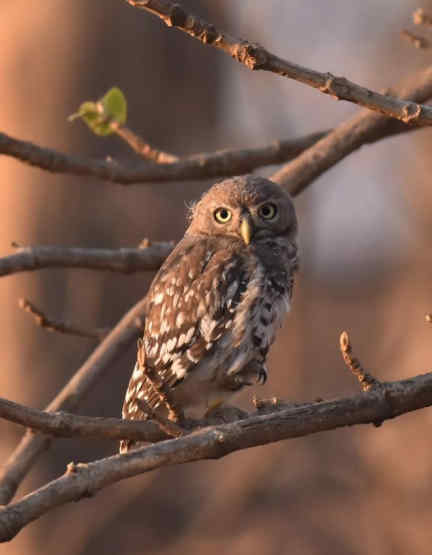
Chronicles of the Forest Owlet (1874 till date)
After being discovered in 1872 from Eastern Madhya Pradesh, there were 6 more records of the Forest Owlet up till 1884 from Odisha and Nandurbar region of Maharashtra. Thereafter, the Forest Owlet was not reported from any locations for almost a century. No, it did not get extinct but somehow it was overlooked! In 1997 the Forest Owlet was rediscovered by Ben King and Pamela Rasmussen from Shahada forests of Maharashtra. This rediscovery led to a renewed interest and research on the Forest Owlet by several organisations and individuals. Over one decade, the Wildlife Research and Conservation Society (WRCS) has been studying the ecology of the Forest Owlet in Central India. In 2005, WRCS carried out an extensive survey for the Forest Owlet in 5 states in India - Odisha, Chhattisgarh, Madhya Pradesh, Maharashtra and Gujarat. This two-year long survey was successful in locating two new populations of the Forest Owlet in Madhya Pradesh. This survey also reported that the habitat of the Forest Owlet in Chhattisgarh and Odisha had been lost to agriculture.
The study began with the intention of learning about the Population, Demography and Ecology of the Forest Owlet Athene (Heteroglaux blewitti) in East Kalibhit Forests of Khandwa District, Madhya Pradesh. This was the very first study on the Forest Owlet to be conducted in the Reserved Forests of Madhya Pradesh.
Teak dominant habitat of Forest Owlet in Madhya Pradesh
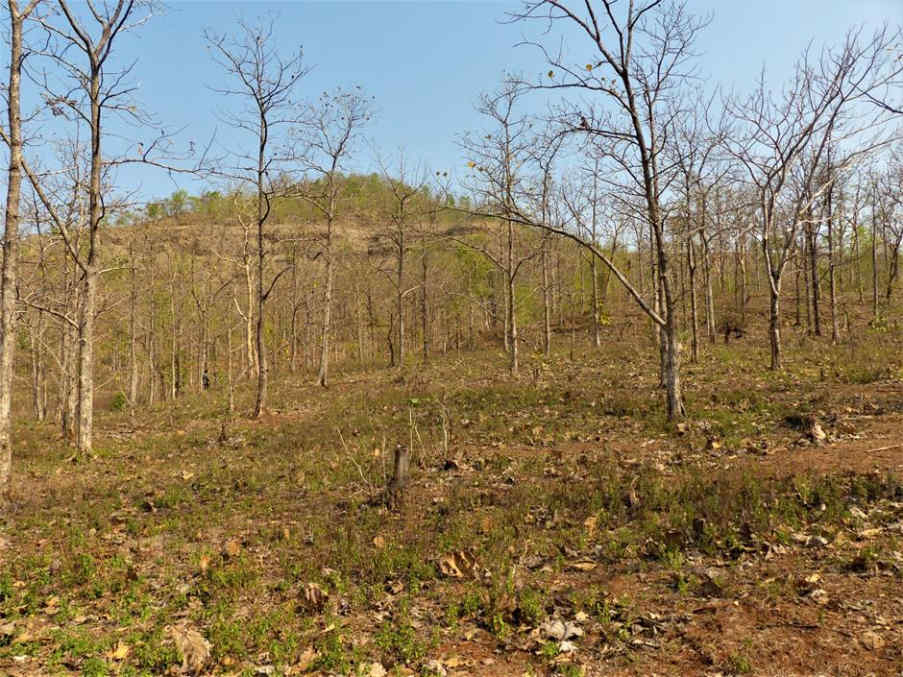
The salient features of the study are mentioned below.
Site Occupancy, Demography, Diet and Nest-selection of the Forest Owlet in East Kalibhit Range, Khandwa District, Madhya Pradesh
The presence and absence of the Forest Owlet was examined in site-occupancy framework wherein multiple visits in each grid was carried out to confirm presence and absence of the species and type of habitat covariate associated with the occupancy of the Forest Owlet. This was also the first study in the country wherein 49 Forest Owlets were colour-banded and 3 Forest Owlets were fitted with VHF tags.
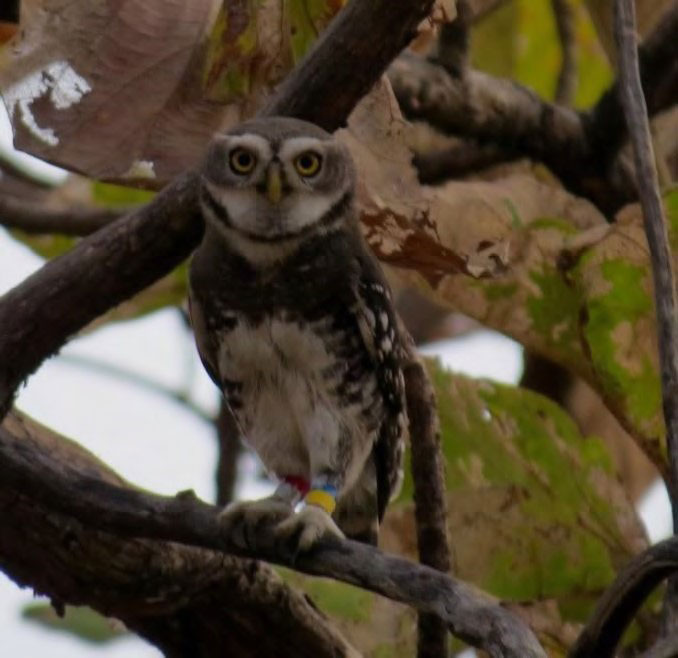
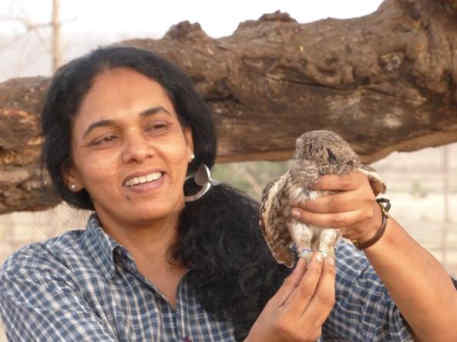
Monitoring of colour-banded owls by lead researcher Dr Prachi Mehta (shown on the left) has revealed immensely useful information on movement pattern, behaviour and demography of the species. Radio-tagged individuals have provided preliminary information on home range and time activity pattern of the Forest Owlet. The study compared the diet composition of the Forest Owlet and the sympatric Spotted Owlet and Jungle Owlet.
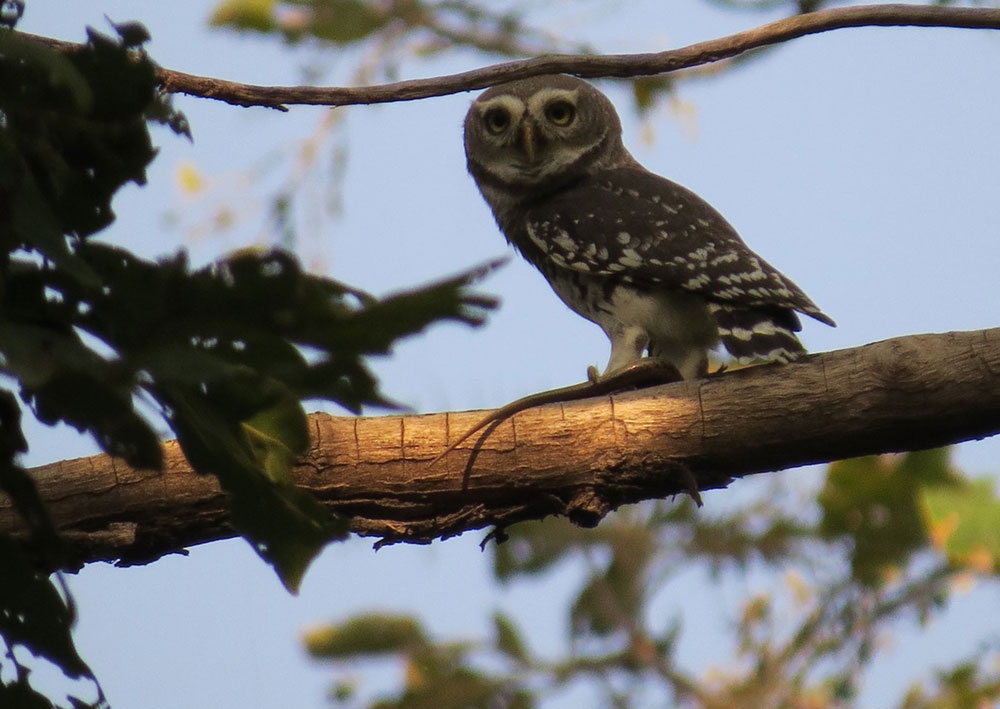

The research revealed that the Forest Owlet takes different type of prey compared to the other two owlets. The research also examined the nest site selection of the Forest, Spotted and Jungle Owlet and reported the specific nest dimensions selected by three owl species. During this study, WRCS also reported a new location of the Forest Owlet from Betul district, Madhya Pradesh.
A Study of Ecological Correlates that Influence Habitat Use, Reproductive success and Nest-Site Selection by the Forest Owlet and (B) Resource Partitioning between Owls in Melghat Tiger Landscape.
Melghat Tiger Reserve is one of the largest tiger reserves of Maharashtra State. The Forest Owlet is well-distributed in Melghat Tiger Reserve. Wildlife Research & Conservation Society is carrying out a study to assess the distribution, site occupancy and habitat selection of the Forest Owlet in Chourakund Range in Melghat Tiger Reserve. The Forest Owlet shares its habitat with other co-existing owls such as smaller cavity-nesting species such as the Spotted Owlet, Jungle Owlet, Scops Owls, and the larger ones such as the Indian Eagle Owl, Brown Fish Owl, Mottled Wood Owl and the Barn Owl.
The research is examining the mechanism of co-existence among the owls. The study is focussing on nest site selection by the Forest Owlet and the afore-mentioned species of owls in the study area and assessing the breeding success of each species. The research also includes studying the diet composition of all owl species, assessing prey availability and understanding owl movements. Prachi and her field team colour-banded 17 Forest Owlets and few other smaller owls to study demography, movement patterns of the birds.
Banded Owl with a half-eaten Calotes in its talons
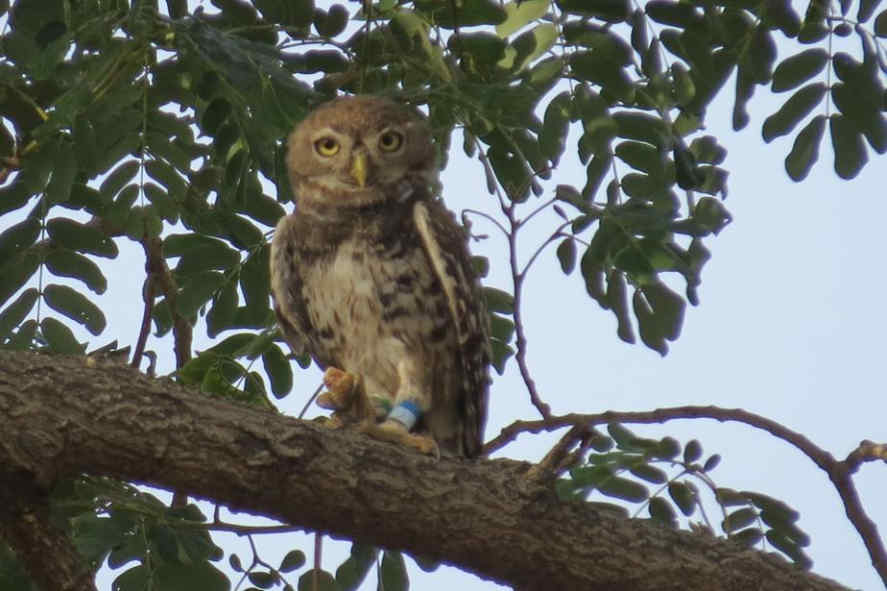
Prey remains for identification
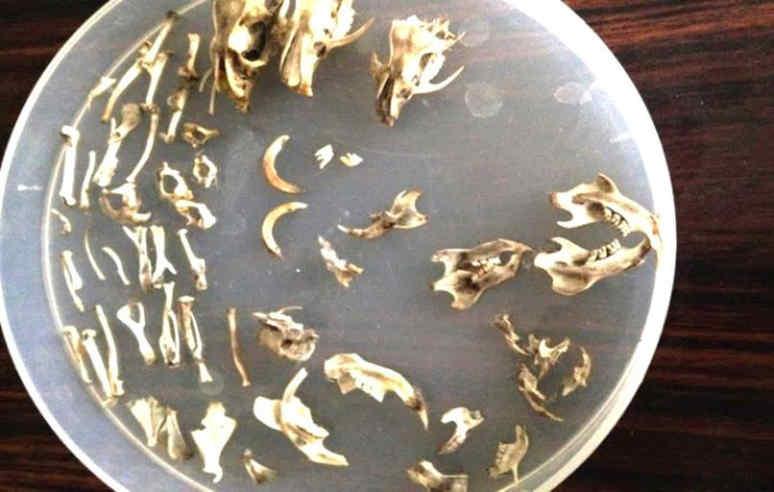
The Raptor Research and Conservation Foundation continues to support Wildlife Research & Conservation Society’s vision of a long-term ecological monitoring of owls in India and develop conservation strategies for protection of owls and their habitat. It is planned to deploy radio rags on eight species of owls in Melghat Tiger Reserve.
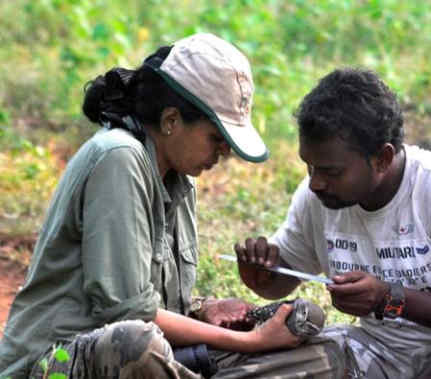
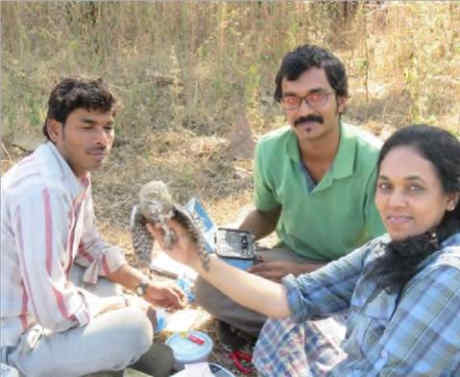
Wildlife Research & Conservation Society’s long term owl research will focus on the question pertaining to studying the movement of the owl species using radio-telemetry. Radio telemetry is an immensely useful scientific technique used in studying spatial ecology, energetics, physiology and behaviour of free ranging animals and can give accurate information on species distribution, mortality rates, habitat use and home-range. The data generated through radio-tagging helps in determining habitat use, and movement patterns of owls.
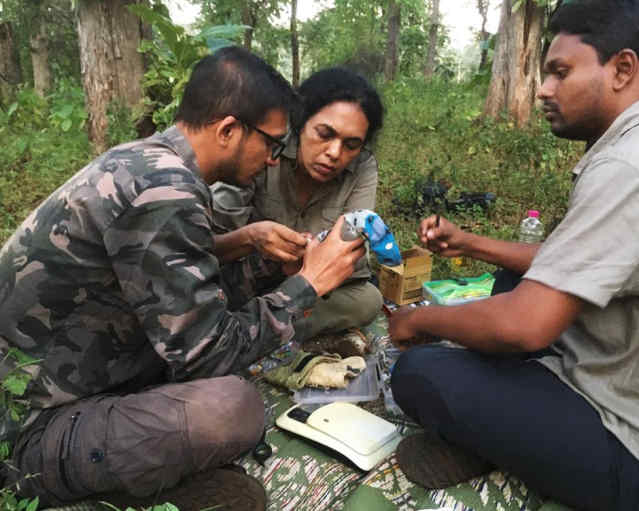

Dr Prachi Mehta taking measurements of her ‘captive’ owl.
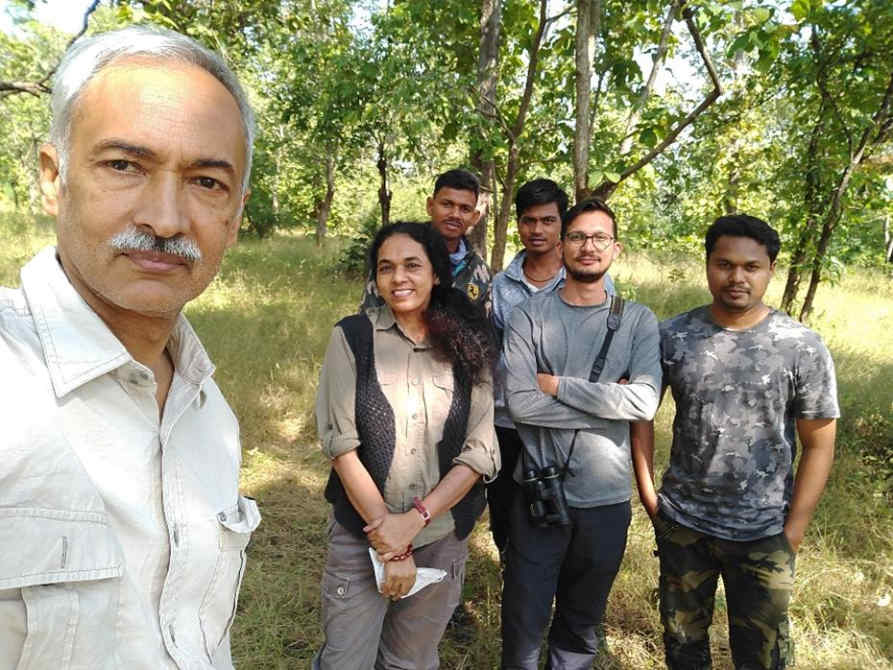
Mr Jayant Kulkarni, Co-investigator in the foreground with Dr. Prachi Mehta and their team.
Emphasis is laid on capacity building and working with local communities is paramount in helping ensure conservation of the owl and its forest ecosystem. Getting local people and giving them a sense of participation in project is an important element as depicted here.
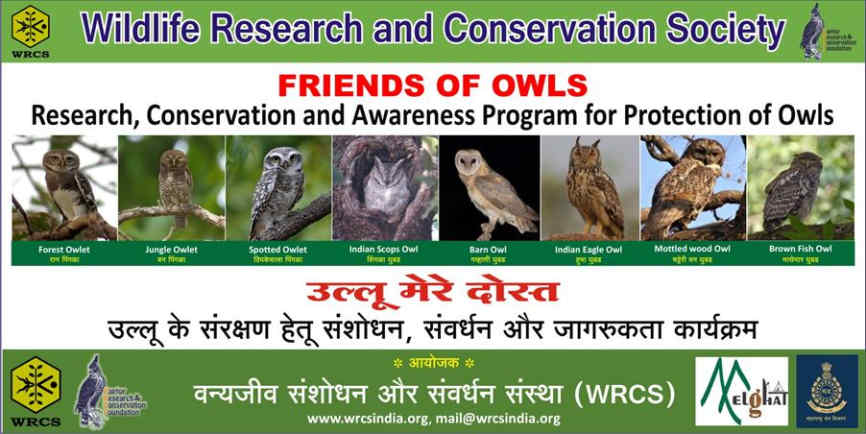 "Owls are my friends" poster in Hindi and English displaying 8 species of owls found in Melghat.
"Owls are my friends" poster in Hindi and English displaying 8 species of owls found in Melghat.
Involving children in conservation
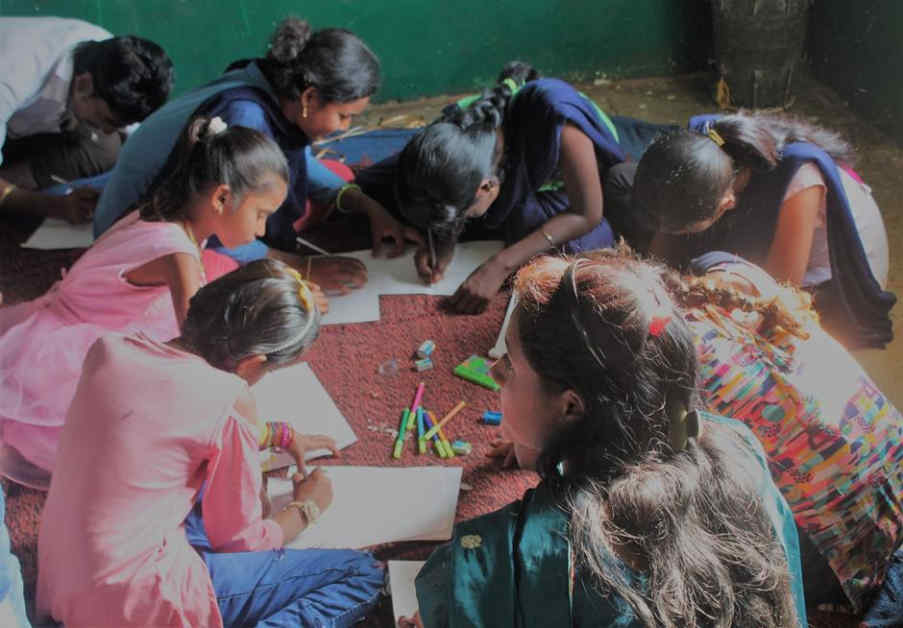 "Owls are my friends" poster in Hindi and English displaying 8 species of owls found in Melghat.
"Owls are my friends" poster in Hindi and English displaying 8 species of owls found in Melghat.
Capacity Building and Implementation of Conservation Program with the State Forest Departments

Workshops for Field Staff and Senior Officers in Madhya Pradesh
- 2015: "Know your Owls": A Workshop for the Field Staff where the staff was informed about identification of owls based on their calls and appearance.
- 2016: House of Owls: This was the second workshop where the field staff was trained in locating the nests of owls in their area and need for protecting the nest and roost trees was discussed.
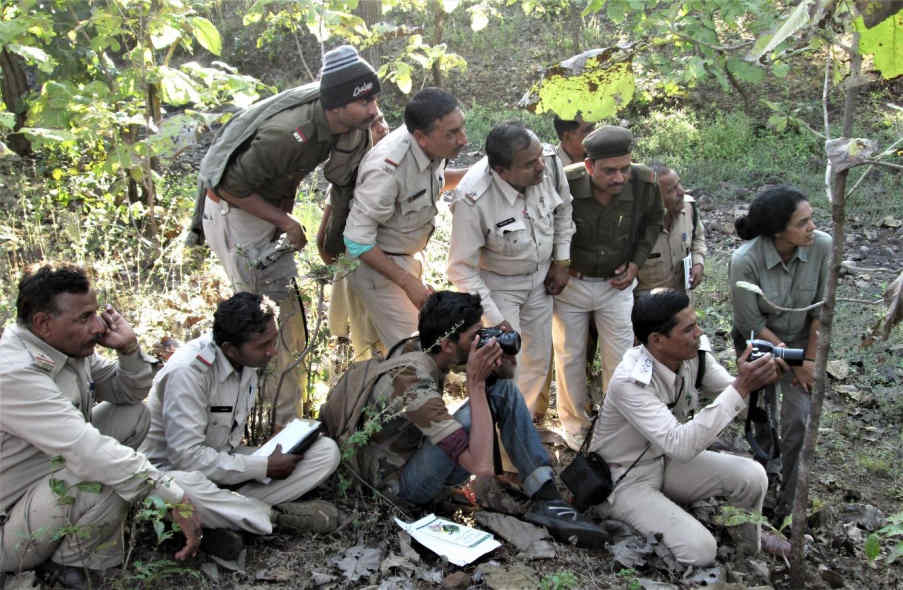
'Hands on' training to forest staff
- 2017: Conservation of the Forest Owlet in Managed Forests: A Workshop for Senior Forest Officers and the Field staff from three divisions wherein field conservation for the forest owlet was discussed. Based on the recommendations of this research, the senior Forest Officers from Madhya Pradesh Forest Department exempted tree felling in the nesting sites of the Forest Owlet and also agreed to the suggestion of painting a green band on roost and nests trees of owls in order to protect them from felling and illicit tree harvesting. This is one of the best examples of integration of research and conservation actions.
- 2019: Friends of Owls: A Workshop for field staff and local communities wherein importance of owl conservation in Melghat and identification of owls of Melghat was discussed. School children participated in owl-themed drawing competition, a street play was organised by villagers and owl awareness posters were displayed.
- 2020: Owls of Melghat Tiger Reserve: A workshop was organised for the senior officers and field staff of Sipna, Gugamal and Akot Wildlife divisions. DCFs, ACFs, RFOs, Foresters and Forest Guards and watchers of all three divisions attended the workshop. Owl identification and conservation was discussed and an Owl quiz was organised.
- 2021: Owl Monitoring and Research: A Workshop was organised for the officers and field staff for field detection of owls, their nest sites and pellet analysis. Owl monitoring app was introduced for the field staff.
- 2021: Nest box installation: A field workshop was organised for installing and monitoring nest boxes for owls.

WRCS has printed posters for owl conservation and displayed them on roads, schools, and villages.
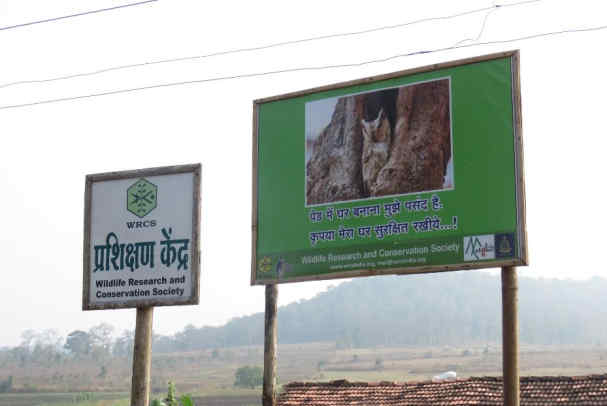
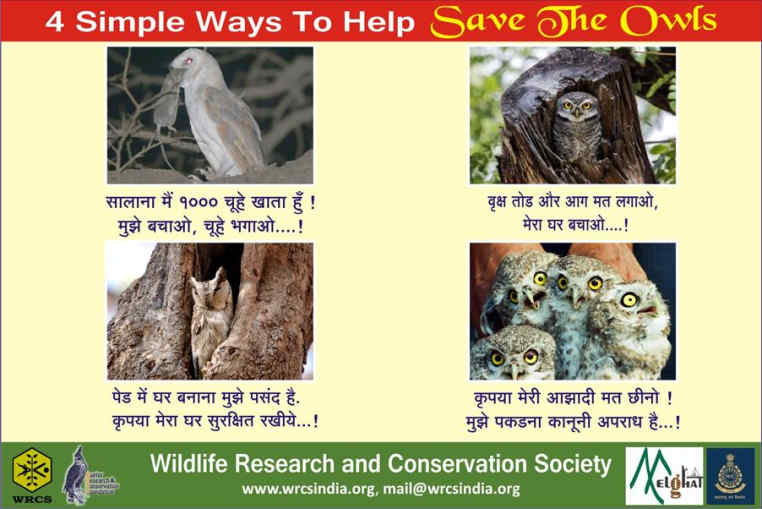
Training Students in Owl Research
25 students, pursuing graduation, post-graduation have been trained in various ecological methods on owl research surveys, pellet analysis and habitat selection by Dr. Mehta and Mr. Kulkarni. 5 students submitted their MSc Dissertations on different aspects of owl ecology.
Involving Local Communities in Owl Conservation
WRCS has started a unique program in which local communities are being trained in making owl-themed handicraft products. Men and women are trained in making bamboo products and also stitching and painting owls on t-shirts, bags, cushion covers and other utility items. This program will help them stay connected in owl conservation and also generate livelihood for the communities.
Kulkarni J., P. Mehta and S. Sheikh. 2020. Habitat Factors Impacting the Occupancy of the Forest Owlet in East Kalibhit Range. Under Review in World Owl Proceeding.
Mehta, P., Anand A., S. Sangeeth, And Kulkarni, J. 2020. Investigating Reversed Sexual Size Dimorphism In the Endangered Forest Owlet Athene(Heteroglaux) Blewitti. In Print : Journal Of Asian Ornithology.
Mehta, P., Anand A., Kulkarni, J., and Rao, M. 2020. Nest-cavity and nest site characteristics of three sympatric owls in central India. In Print. Proceedings of World Owl Conference.
Kulkarni, J., & Mehta, P., 2020. Habitat selectivity by the Forest Owlet Athene (Heteroglaux) blewitti in Nandurbar District, Maharashtra, India. Indian BIRDS 16 (2): 33–39.
Mehta, P., S. Talmale, V. Kulkarni and J. Kulkarni 2020. All About Owl Diet. A Technical Manual on identification of Prey Remains from Regurgitated Owl Pellets from Central India. Raptor Research and Conservation Society and Wildlife Research and Conservation Society. Pp 203. ISBN 978-93-5391-691-6. The manual can be obtained by requesting here
Koparde P, Mehta P, Mukherjee S, Robin V., 2019. Quaternary climatic fluctuations and resulting climatically suitable areas for Eurasian owlets. Ecology and Evolution 9: 4865-4875.
Koparde P, Mehta P, Reddy S, Ramakrishnan U, Mukherjee S, Robin V.V . 2018. The critically endangered forest owlet Heteroglaux blewitti is nested within the currently recognized Athene clade: A century-old debate addressed. PLoS ONE 13(2):
Mehta, P., J. Kulkarni, S. Talmale and R. Chandarana. 2018. Diets of sympatric Forest Owlets, Spotted Owlets, and Jungle Owlets in East Kalibhit Forests, Madhya Pradesh, India. J. Raptor. Research 52: 338-348.
Mehta, P. J. Kulkarni, S. Mukherjee, S. Chavan, and A. Anand 2017. A distribution survey of the Forest Owlet Heteroglaux blewitti in north-western Maharashtra. Indian Birds 13:103–108.
Mehta, P., Prasanna N. S., Nagar, A. K., & Kulkarni, J., 2015. Occurrence of Forest Owlet Heteroglaux blewittii in Betul District, and the importance of its conservation in the Satpura landscape. Indian BIRDS 10 (6): 157–159.
Mehta, P., Kulkarni, J., & Patil, D., 2008. A survey of the Critically Endangered Forest Owlet Heteroglaux blewittii in Central India. Birding ASIA 10: 77–87.
Owl Booklets for the Forest Department
Mehta, P., J. Kulkarni, Giri, S and Bobade S 2020. Owls of Melghat Tiger Reserve. For Maharashtra Forest Department. School of Owls Series 3. Wildlife Research and Conservation Society, Pune.
Mehta P and J Kulkarni 2016. House of Owls. On Owl Nest Types in Khandwa District, Madhya Pradesh. School of Owls Series 2. Wildlife Research and Conservation Society.
Mehta P and J. Kulkarni 2015. Know Your Owls. On Owl Diversity in Khandwa District, Madhya Pradesh. School of Owls Series 1. Wildlife Research and Conservation Society.